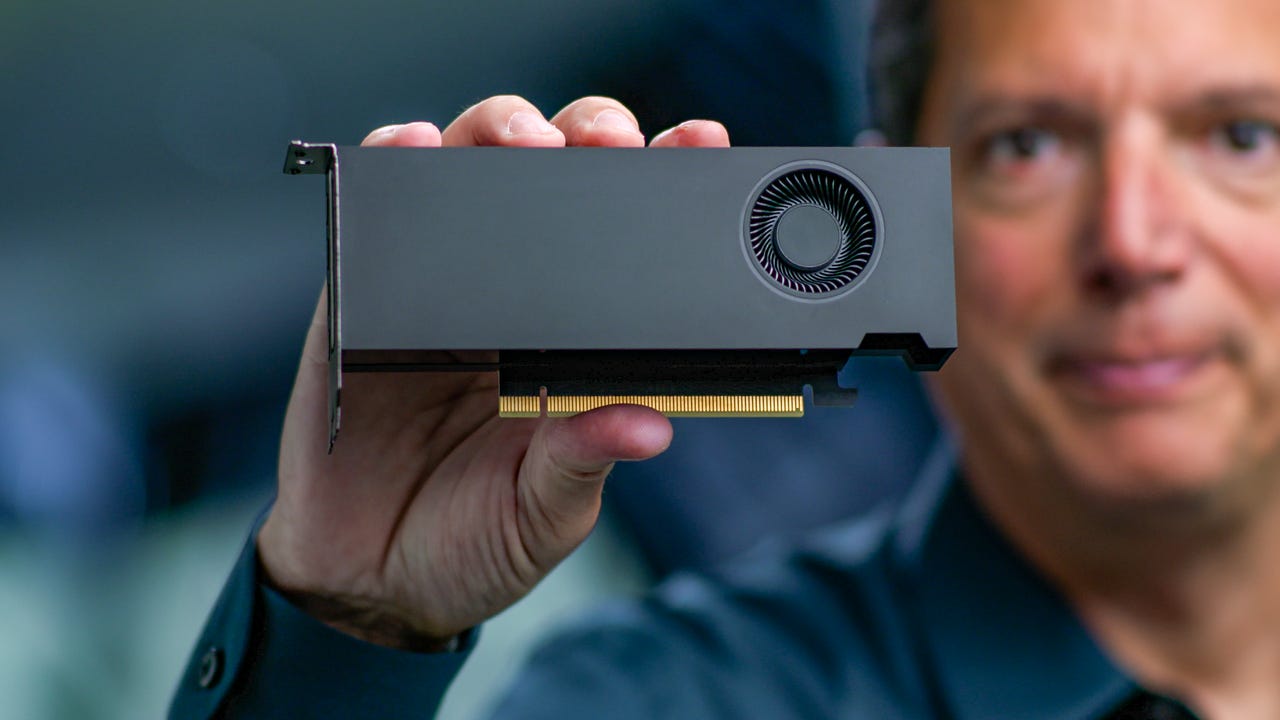Nvidia expands Omniverse with a new GPU, new collaborations

Nvidia on Tuesday announced a series of ways it plans to bring the Omniverse design and collaboration platform to a vastly larger audience. Those plans include new integrations with Blender and Adobe, companies that will extend the potential reach of Omniverse by millions. Nvidia is also introducing the new RTX A2000 GPU, bringing the RTX technology that powers Omniverse to a wide range of mainstream computers.
Nvidia rolled out Omniverse in open beta back in December, giving 3D designers a shared virtual world from which they can collaborate across different software applications and from different geographic locations. Earlier this year, the company introduced Omniverse Enterprise, bringing the platform to the enterprise community via a familiar licensing model.
"We are building Omniverse to be the connector of the physical and virtual worlds," Richard Kerris, VP of Omniverse for Nvidia, said to reporters last week. "We believe that there will be more content and experiences shared in virtual worlds than in physical worlds. And we believe that there will be amazing exchange markets and economic situations that will be first built in the virtual world... Omniverse is an exchange of these vital worlds. We connect everything and everyone, through a baseline architecture that is familiar to existing tools that are out there and existing workflows."

Nvidia unveiled the RTX A2000 GPU to bring RTX technology to mainstream workstations.
In a blog post, Nvidia VP Bob Pette wrote that the new A2000 GPU "would serve as a portal" to Omniverse "for millions of designers." The A2000 is Nvidia's most compact, power-efficient GPU for standard and small-form-factor workstations.
The GPU has 6GB of memory capacity with an error correction code (ECC) to maintain data integrity -- a feature especially important for industries such as healthcare and financial services.
Based on the Nvidia Ampere architecture, it features 2nd Gen RT Cores, enabling real-time ray tracing for professional workflows. It offers up to 5x the rendering performance from the previous generation with RTX on. It also features 3rd Gen tensor cores to enable AI-augmented tools and applications, as well as CUDA cores with up to 2x the FP32 throughput of the previous generation.
Speaking to reporters, Pette said the A200 would enable RTX in millions of additional mainstream computers. More designers will have access to the real-time ray tracing and AI acceleration capabilities that RTX offers. "This is the first foray of RTX into what is the largest volume segment of GPUs for Nvidia," Pette said.
Among the first customers using the RTX A2000 are Avid, Cuhaci & Peterson and Gilbane Building Company.
The A2000 desktop GPU will be available in workstations from manufacturers including ASUS, BOXX Technologies, Dell Technologies, HP and Lenovo, as well as Nvidia's global distribution partners, starting in October.
Supporting Universal Scene Description
Meanwhile, Nvidia is encouraging the adoption of Omniverse by supporting Universal Scene Description (USD), an interchange framework invented by Pixar in 2012. USD was released as open-source software in 2016, providing a common language for defining, packaging, assembling and editing 3D data.
Omniverse is built on the USD framework, giving other software makers different ways to connect to the platform. Nvidia announced Tuesday that it's collaborating with Blender, the world's leading open-source 3D animation tool, to provide USD support to the upcoming release of Blender 3.0. This will give Blender's millions of users access to Omniverse production pipelines. Nvidia is contributing USD and materials support in Blender 3.0 alpha USD, which will be available soon.
Nvidia has also collaborated with Pixar and Apple to define a common approach for expressing physically accurate models in USD. More specifically, they've developed a new schema for rigid-body physics, the math that describes how solids behave in the real world (for example, how marbles would roll down a ramp). This will help developers create and share realistic simulations in a standard way.
Nvidia also announced a new collaboration with Adobe on a Substance 3D plugin that will bring Substance Material support to Omniverse. This will give Omniverse and Substance 3D users new material editing capabilities.
Expanding Omniverse access
Nvidia on Tuesday also announced that Omniverse Enterprise, currently in limited early access, will be available later this year on a subscription basis from its partner network. That includes ASUS, BOXX Technologies, Dell Technologies, HP, Lenovo, PNY and Supermicro.
The company is also extending its Developer Program to include Omniverse. This means the developer community for Nvidia will have access to Omniverse with custom extensions, microservices, source code, examples, resources and training.